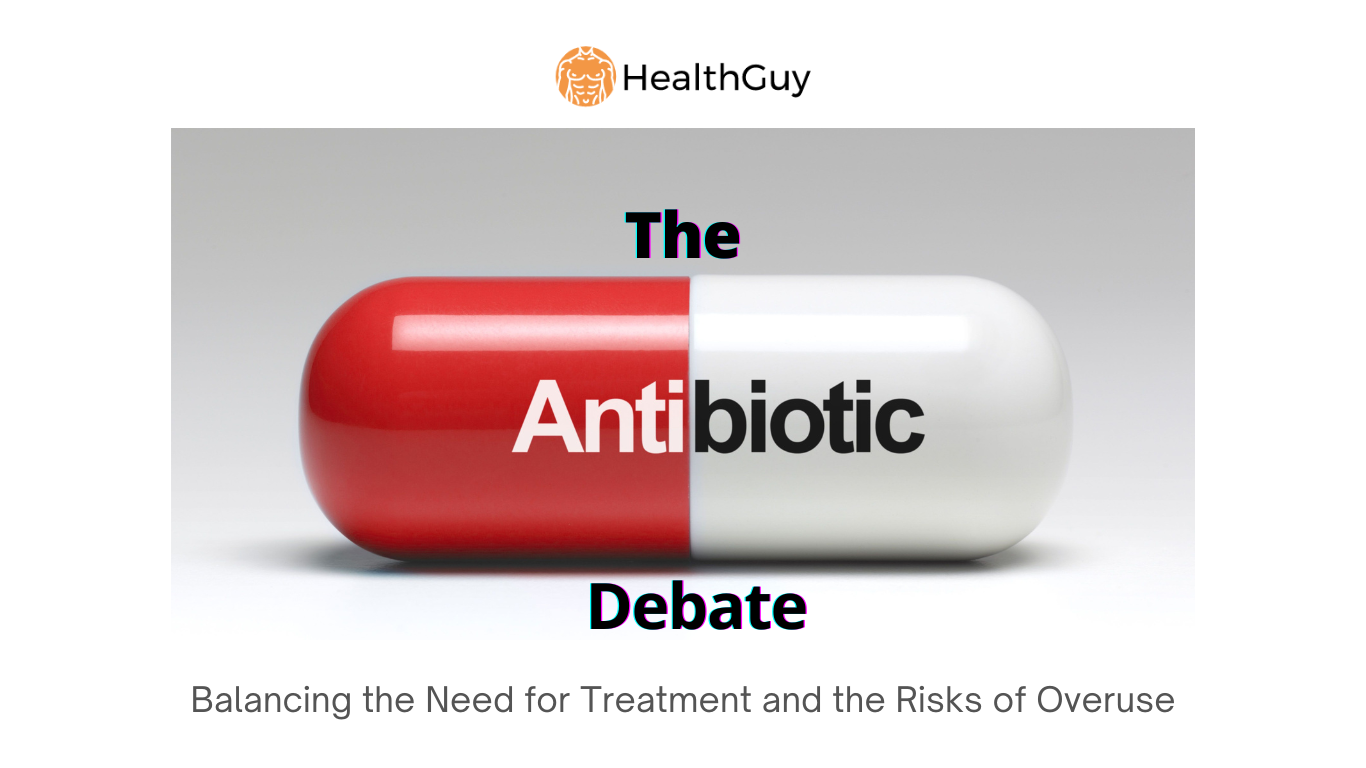
The Antibiotic Debate: Balancing the Need for Treatment and the Risks of Overuse
Antibiotics are a type of medication used to fight bacterial infections. These powerful drugs have saved countless lives over the years by curing infections that were once deadly. However, in recent years, there has been a growing concern about the overuse and misuse of antibiotics, which can lead to drug-resistant bacteria and other harmful side effects. In this article, we’ll explore the do’s and don’ts of using antibiotics, the pros and cons of these medications, and offer tips for using them safely and effectively.
Antibiotics are one of the most commonly prescribed medications, and their use has increased dramatically over the past few decades. In the United States, it’s estimated that up to 30% of antibiotics prescribed in outpatient settings are unnecessary or inappropriate. This overuse of antibiotics can lead to the development of antibiotic-resistant bacteria, which can be difficult or even impossible to treat with existing medications.
The World Health Organization (WHO) has warned that antibiotic resistance is one of the biggest threats to global health and development, and has called for urgent action to address the problem. According to the Centers for Disease Control and Prevention (CDC), at least 2.8 million people in the US get antibiotic-resistant infections each year, and more than 35,000 people die as a result.
To address this issue, health experts recommend several strategies, including reducing unnecessary antibiotic use, developing new antibiotics and alternative treatments, and promoting infection prevention measures such as vaccination and hand hygiene. By working together to address the problem of antibiotic resistance, we can help ensure that these valuable medications remain effective for years to come.
Contents
The Pros of Antibiotics
Antibiotics can be highly effective in treating bacterial infections. They work by killing or slowing the growth of bacteria, which allows the body’s immune system to fight off the infection more effectively. Antibiotics are used to treat a wide range of conditions, including urinary tract infections, strep throat, and pneumonia. In some cases, antibiotics can be life-saving, particularly in cases of severe infections such as sepsis.
The Cons of Antibiotics
While antibiotics are powerful drugs, they are not without risks. One of the biggest concerns is the development of drug-resistant bacteria. When antibiotics are overused or used inappropriately, bacteria can develop resistance to them, making them less effective over time. Antibiotics can also have side effects, ranging from mild symptoms such as diarrhoea and nausea to more serious reactions such as an allergic reactions.
The Do’s and Don’ts of Antibiotics
To use antibiotics safely and effectively, it’s important to follow a few key guidelines. Here are some do’s and don’ts to keep in mind:
Do:
- Take antibiotics exactly as prescribed by your doctor.
- Finish the entire course of antibiotics, even if you feel better before the medication is gone.
- Talk to your doctor about any concerns or side effects you experience.
- Practice good hygiene to prevent the spread of infection.
- Take probiotics to help restore the natural balance of bacteria in your body after taking antibiotics.
Don’t:
- Use antibiotics for viral infections, such as the common cold or flu.
- Share antibiotics with others or take leftover medication from a previous illness.
- Stop taking antibiotics without talking to your doctor, even if you feel better.
- Overuse antibiotics, as this can lead to drug-resistant bacteria and other harmful side effects.
In conclusion, antibiotics can be a valuable tool in the fight against bacterial infections, but they must be used responsibly and with care. By following the do’s and don’ts of antibiotic use and working with your doctor to determine the best course of treatment, you can help protect yourself and your family from harmful side effects and the development of drug-resistant bacteria.
